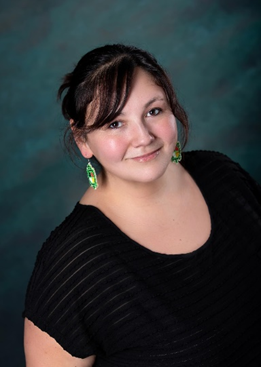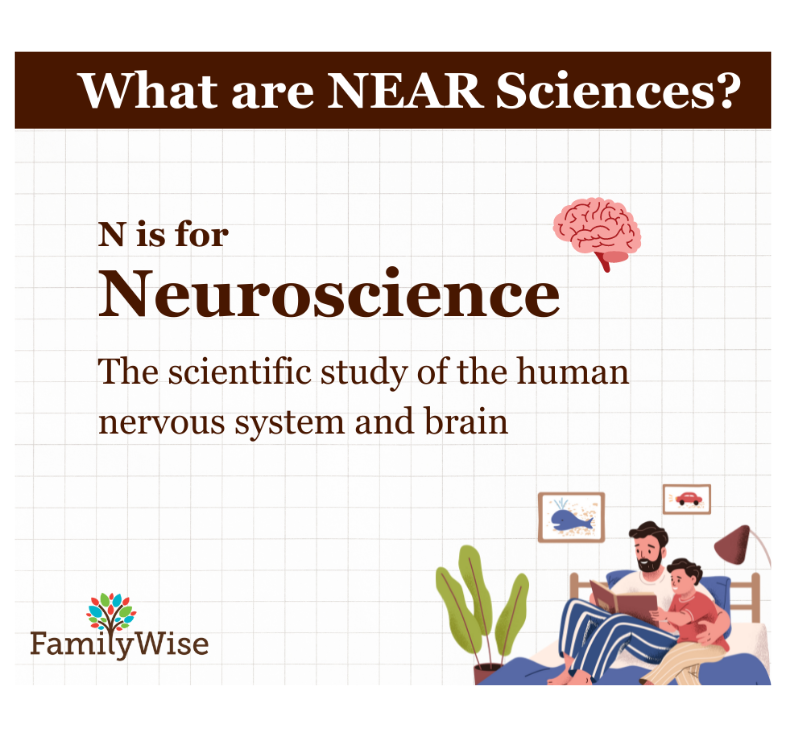Understanding, Hope and Healing through NEAR Sciences
When people first hear about NEAR Science (Neuroscience, Epigenetics, Adverse Childhood Experiences, and Resilience), the words that make up the acronym can be intimidating. But while few of us probably use “epigenetics” in conversation, once we understand the stories behind them, NEAR Science becomes a powerful tool for self-healing communities.
ACEs are not destiny

Training Manager, Susie Voss
Through our NEAR Communities Programs, FamilyWise hosts “Understanding NEAR: Building Self-Healing Communities” presentations in communities statewide, emphasizing the full spectrum of NEAR, from root cause to resilience.
As FamilyWise Training Manager Susie Voss puts it, “NEAR is a way to understand how human experiences—including historical trauma and our own adverse childhood experiences—impact us throughout our lives and as adults.” Importantly, the work connects families with the protective factors to build resilience—the all-important final letter in the NEAR puzzle.
”It’s important for people to know that ACEs are not destiny,” shares FamilyWise Director of Prevention Initiatives & Tribal Projects Linsey McMurrin. “In my work, I would never go into a community and say, ’Look at what you’re up against (through no fault of your own, often)’–without sharing how protective factors can counter the impact of trauma and historical adversity. It’s about melding all those different pieces of the puzzle.”
It’s not what’s wrong with you, it’s what happened to you
Linsey points to a parable commonly told in public health. While fishing in a river, two people continuously rescue villagers who’ve been carried away by the current. Growing tired, they eventually go upstream to find out why people keep falling in. As with NEAR Science, it’s about treating the cause—not the symptom.

Wraparound Facilitator, Jake Trotzky-Sirr
How does this play out in FamilyWise’s work? Wraparound Facilitator Jake Trotzky-Sirr says he’s seen it have tangible benefits across High-Fidelity Wraparound, Supervised Parenting, and other FamilyWise programs. “It really helps us understand some things that could easily just be written off as [negative],” says Jake. “When someone lashes out, it doesn’t mean they’re a bad person. They’re reacting to something, and if we can figure out what [in their past] they’re reacting to, we can help them address that.”
Susie has seen benefits among FamilyWise staff as well. “One colleague shared that after hearing a NEAR presentation, it unlocked something that helped her see: This is why I’m still smoking. I’ve been smoking as an adaptive response to what I’ve been through. This allowed her to move forward and quit smoking. It’s such a powerful thing to understand ourselves, and that translates to understanding other people, too.”
“NEAR Science helps us shift that question from what’s wrong to what happened to you,” adds Linsey. “We can go from a place of judgment to one of curiosity and compassion and empathy. It’s empowering because it removes shame and blame.”
“What happened” is not confined to yourself, Linsey notes. “It’s about adversity we might experience ourselves throughout life but also how our ancestors have been impacted: through epigenetic inheritance we feel the after-effects of those traumas. As a Native person, it’s important for me and my communities that we speak to that historical trauma.”
Jake recalls working with a mother whose great-grandmother had been enslaved. “Talking about intergenerational and historical trauma really empowered her.” After exploring those underlying factors, “She moved to the resiliency piece, how to make sure she built builds protective factors around her young children as they worked toward reunification through Child Protection Services.”
FamilyWise staff has also seen our large-group presentations lead to action at the community and policy level. Through FamilyWise’s Tribal NEAR Communities work, Linsey saw the Fond du Lac tribal council adopt a policy requiring NEAR training for all employees. ”It’s inspiring to see different groups taking actions—including policy and systems change—that are leading to self-healing communities.”
NEAR Science brings us near

Director of Prevention Initiatives and Tribal Projects, Linsey McMurrin
Whether at the individual or community level, “People who hear the information are often really inspired to share it with others,” reflects Susie. “There is something so human, compassionate, and hopeful about understanding ourselves and others and finding ways to break cycles. Seeing people [attend a presentation] and then ask, ‘What can I do next?’ That’s exciting, that’s what we hope to see.”
“Seeing people take the time to wonder about other people’s stories, why they act and think the way they do, that feels like a culture shift in these times that seem so divisive,” says Linsey.
She sees that hope in her own kids, too. “The information about neuroscience is so fascinating, I’ve taught the basic pieces to my boys,” she says. “Now, if they hear my voice rising, they’ll say, ‘Maybe we should all stop and take a deep breath.’ I’m excited about what it could mean if we start raising generations of young people who have those social-emotional skills and recognize that emotions are indicators, not dictators. I’m hopeful we can reduce ACEs in future generations and create healthy, thriving communities.”
To learn more about NEAR Sciences, view our resource list by topic.
Learn more about how FamilyWise raises awareness of NEAR sciences in Minnesota communities.
Watch the full “upstream” fable referenced earlier in this post: The Upstream Solution
